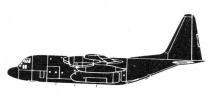Incident Overview

Description
A Lockheed C-130J Hercules military transport plane was destroyed when it flew into the side of a glacier near Mount Kebnekaise, Sweden. All five on board were killed. The flight departed Harstad-Narvik-Evenes Airport (EVE) at 13:41 on a flight to Kiruna Airport (KRN). It was part of a three ship formation in the exercise Cold Response 2012 where three aircraft were to fly to Kiruna to pick up personnel and gear. A German Air Force Transall C-160 had taken off at 13:30 and arrived at Kiruna as planned. Last radio contact with C-130J 5630 was at 14:43 with Kiruna Tower and radar contact was lost at 14:56. Search operations are hampered by cloud cover and poor visibility due to strong winds. The wreckage was finally located on March 17, at 08:30. Debris was scattered on the side of a glacier. The investigation into the cause of the accident showed a.o. that the GPWS/TAWS system operated in ‘Tactical’ mode and thus did not provide warnings to the crew about the terrain. Also, the airplane operated outside Swedish radar coverage Causes The accident was caused by the crew on HAZE 01 not noticing to the shortcomings in the clearances issued by the air traffic controllers and to the risks of following these clearances, which resulted in the aircraft coming to leave controlled airspace and be flown at an altitude that was lower than the surrounding terrain. The accident was rendered possible by the following organisational shortcomings in safety: – The Norwegian Air Force has not ensured that the crews have had sufficiently safe working methods for preventing the aircraft from being flown below the minimum safe flight level on the route. – LFV has not had sufficiently safe working methods for ensuring, partly, that clearances are only issued within controlled airspace during flight under IFR unless the pilot specifically requests otherwise and, partly, that relevant flight information is provided.
Source of Information
http://www.aftonbladet.se/nyheter/article14529924.ab, http://www.vg.no/nyheter/innenriks/artikkel.php?artid=10079136http://www.aftonbladet.se/nyheter/article14529924.ab, http://www.vg.no/nyheter/innenriks/artikkel.php?artid=10079136Primary Cause
Failure to adequately verify and adhere to clearances issued by air traffic controllers, leading to the aircraft operating outside Swedish radar coverage and subsequently deviating to a lower altitude than the surrounding terrain.Failure to adequately verify and adhere to clearances issued by air traffic controllers, leading to the aircraft operating outside Swedish radar coverage and subsequently deviating to a lower altitude than the surrounding terrain.Share on:





